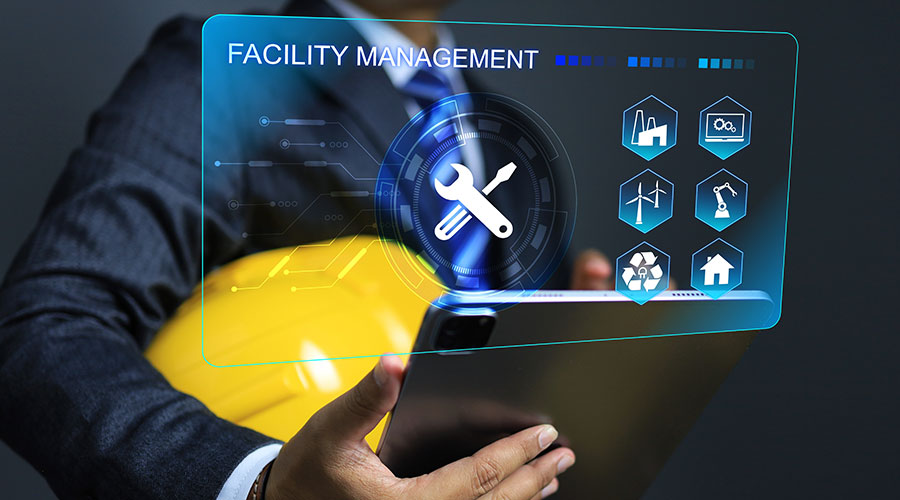Broadband Infrastructure for Commercial Buildings: Tenant Needs
Understanding tenant telecommunication needs is critical for any commercial building owner. Here's what to ask.
Commercial property owners should seek to understand potential tenant telecommunications needs. Minimal research into tenants’ needs can inform the technology decisions, for example:
• What types of tenants occupy the commercial space?
• How much do tenants spend on telecommunications connections?
• What are their current broadband speed needs? What are their anticipated needs?
• Can you attract a different category of tenant if you increase broadband speeds?
The initial challenge facing commercial property owners is determining what companies and technologies are available to serve the property. Typically there will be a telephone company and cable company capable of serving the building with a variety of technologies. However, some existing technologies are inadequate, too expensive, or even becoming obsolete, which can be difficult and create frustration. In such instances, city officials can potentially provide assistance by either sharing knowledge of viable commercial options available or offering the service through a fiber optic network that the municipality already owns or operates. Ultimately, if multiple telecommunications companies are available to provide service to the building, pricing will usually be lower and service will be better simply because they have to compete.
Commercial property owners should also not overlook the valuable communications assets that they have available, such as building entrances; lateral connections to fiber or other communications lines; vertical assets such as the roof and flag pole; risers within the building; and the “meet me room” or telecommunications closet.
Regarding entrances, it is important that there are multiple access points into a building so that, in the event that a tenant needs redundant services, there are two routes available. This is especially critical in the case of a service interruption — essentially, if one form of connectivity is interrupted, there is a back-up connection that provides redundancy. With multiple building entrances, the tenant will not lose service because they will be provided service via the redundant line. This of course means that the building will need two lines (laterals) into the facility off of what is called the backbone line of the communications network. This backbone line usually is in the street right-of-way in front of the building or in the utility easement in the back of the building. Laterals with two entrance facilities will satisfy even the pickiest tenant regarding redundancy.
Roof rights are also important, and they can be utilized for two primary purposes. First, commercial property owners can rent roof rights to cellular companies, microwave companies, or others that have a need to serve the area around and near the building. This provides building owners with a revenue stream or more connectivity to the building. Another option is for commercial property owners to simply allow a telecommunications company that wants to serve the building onto the roof to connect (usually by microwave) to another network so that they can provide service to the building tenants, without other rights.
The second use of rooftops is for the installation of risers, which are used to connect multiple floors in a building. This option has value; however, that value is not leasable and it must be protected. Ideally, risers should be utilized by multiple telecommunications companies and be connected to the multiple building entrances, which in turn are connected to multiple laterals. Building owners need to make sure there are no choke points on the property. It is a strategy among some telecommunications companies to fill up risers and make them useless for other companies to use, thereby limiting competition. Telecommunications companies will sometimes go further, filling laterals with useless copper in an effort to block competitors from entering the building at all. A commercial property owner must be cognizant of these potential actions and ensure that they prevent telecommunications companies from damaging the value of their property by obstructing risers and laterals.
The “meet-me-room” or telecommunications closet is typically a place in a commercial building where telecommunications companies interface with building tenants. Once again, this closet should be available to any telecommunications company and should be large enough with sufficient HVAC to allow multiple companies to place equipment in there and serve customers.
If considering an exclusive building arrangement with a telecommunications company, it is advisable to have legal counsel on hand for the negotiations. Legal counsel with experience in the field can help you negotiate a better deal and avoid contractual nuances and overly long-term commitments that the commercial property owner may not have anticipated.
The overall question for commercial building owners and facility managers when considering smart building infrastructure is straightforward: What creates value for the tenants? It is expected that tenants will want high-speed, low-cost internet connectivity, but there are several forms of delivery available, from fiber, to cellular, to Wi-Fi, as well as multiple building components that can be used as assets for expansion. When allowing telecommunications companies into the building, owners and managers should also make certain that they are offering tenants a choice and competition. As companies continue to become more technology-dependent and new high-tech companies continue to enter into the market, the demands for high-speed connectivity will grow and will best be delivered through redundant connections that likely use fiber optics.
Gregory Dunn (gregory.dunn@icemiller.com) is a partner with Ice Miller and is in the Internet of Things group.
Lindsay Miller (lindsay.miller@icemiller.com) is an attorney with the Internet of Things and the government law groups at Ice Miller.
Matthew Diaz (matthew.diaz@icemiller.com) is an attorney in the firm’s Internet of Things and the data security and privacy groups.
Ice Miller provides legal solutions for clients, including those involved with smart cities, connected autonomous vehicles, the Internet of Things, as well as many other connected businesses.
Related Topics:













